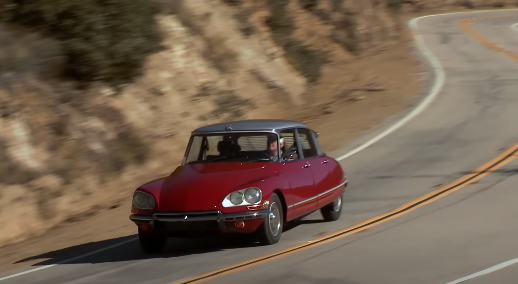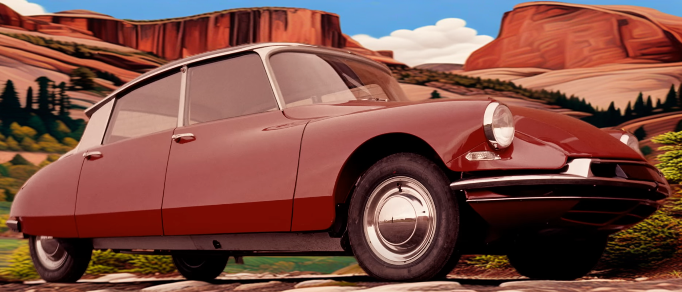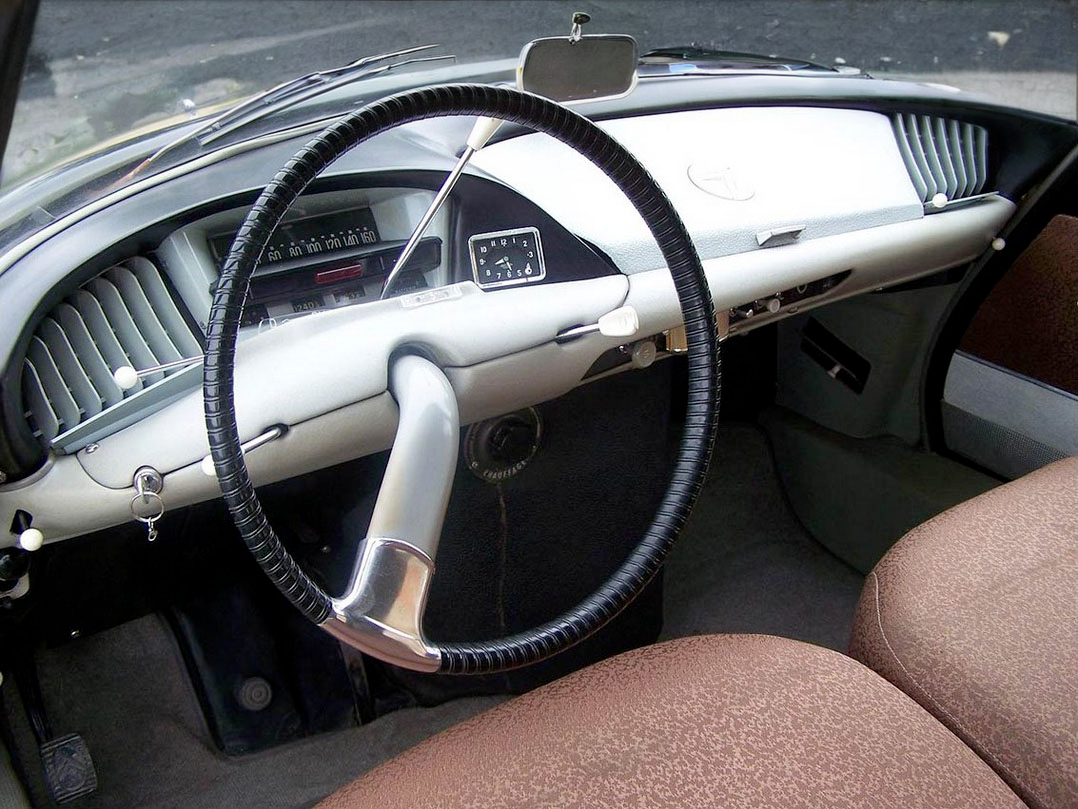The Citroën DS: A Revolutionary Automobile Icon
October 14, 2024

The Citroën DS, often hailed as one of the most influential automobiles of the 20th century, is a French luxury car that made its debut at the Paris Motor Show in 1955. Known for its aerodynamic body, advanced technology, and innovative engineering, the DS quickly captured the attention of car enthusiasts and the general public alike. This blog post aims to delve deeper into the development, design, technology, and cultural significance of the Citroën DS, an automobile that revolutionized the industry and left an indelible mark on automotive history.
Historical Context

To fully appreciate the creation of the Citroën DS, one must consider the historical and social context of France in the 1950s. Following World War II, Europe was in a period of rebuilding, grappling with economic challenges while simultaneously embracing modernization. The automotive industry was no exception; manufacturers were challenged to innovate, improve safety, and respond to an evolving market that demanded more stylish, efficient, and comfortable vehicles.
Citroën, a brand known for its commitment to engineering excellence and daring designs, sought to rise to this challenge. Under the leadership of the visionary Chief Engineer, André Lefèbvre, and the firm’s industrial designer, Flaminio Bertoni, the DS project was born. The team wanted to create a vehicle that was not only a means of transportation but also a statement of progressive design and technology.
Design Innovation

The design of the Citroën DS is often seen as a pioneering effort in automotive aesthetics. Its elongated, teardrop shape featured a futuristic profile that was not only visually striking but also aerodynamically efficient. The car’s distinctive front end, characterized by its large, curved windshield and floating roof, set it apart from its contemporaries.
The DS featured a monocoque construction, which meant that the body and chassis were combined into a single unit, creating a lighter and more rigid structure. This design choice contributed to the vehicle’s performance and handling characteristics. The car’s suspension system was groundbreaking in its own right; it used hydropneumatic technology, which allowed for an automatic levelling function that provided a smooth ride, even on uneven terrain.

Moreover, the interior of the Citroën DS reflected an obsession with comfort and luxury. Wide, cushioned seats, spacious legroom, and an intuitive dashboard layout created an inviting atmosphere. The steering wheel, which was designed to control a hydraulic system, provided a unique driving experience. These elements combined to establish the DS as a vehicle that prioritized the driver’s experience, a philosophy that has influenced countless automotive designs since.
Technological Advancements
Beyond its stunning aesthetics, the Citroën DS was a marvel of technological innovation. One of its standout features was the hydropneumatic suspension system, which allowed the vehicle to adjust its ride height automatically based on load and road conditions. This innovation provided unparalleled comfort and handling, setting new standards for performance vehicles.
The DS also featured power-assisted brakes, which significantly enhanced stopping power with minimal effort. Citroën was one of the first manufacturers to introduce features such as directional headlights that adjusted based on the steering angle, improving nighttime visibility and safety. Additionally, the car could be fitted with a semi-automatic transmission, making it easier to operate for drivers unfamiliar with manual gear shifting.
Cultural Impact
The Citroën DS transcended its role as merely a car; it became a cultural icon. Its presence in popular culture was cemented by its appearances in films, literature, and music. The DS was used as a symbol of modernity and innovation in cinema, often associated with stylish characters and affluent lifestyles. Notable appearances include its role in the film “The Day of the Jackal,” where it was used by the protagonist in a thrilling chase scene.
Furthermore, the car garnered a dedicated following, including prominent figures such as former French President Charles de Gaulle, who famously survived an assassination attempt in a DS. The association with political power and luxury only heightened its appeal. The Citroën DS became a statement of status, embraced by celebrities and influential personalities.
Legacy of the Citroën DS
The Citroën DS remained in production until 1975, and during that time, it underwent several refinements and updates. With over 1.5 million units produced, the DS became a symbol of French automotive ingenuity. Its legacy is evident today; the DS has influenced many subsequent models from not just Citroën, but the entire automotive industry.
In recent years, Citroën has sought to honor its legacy by introducing the DS brand as a premium line, focusing on luxury vehicles that embrace some of the historical innovations rooted in the original DS. The combination of modern technology and the nostalgic design ethos pays homage to a classic while addressing contemporary consumer needs.
Conclusion
The Citroën DS is much more than just another car; it is a testament to human creativity and perseverance in the automotive sector. Its sophisticated design, groundbreaking technology, and cultural resonance continue to inspire generations of designers, engineers, and car enthusiasts. As we look toward the future of automobile design, the legacy of the Citroën DS remains a source of inspiration—a shining example of how a single vehicle can embody innovation, luxury, and artistic expression. Its enduring presence serves as a reminder that true excellence in automotive design is timeless, transcending the constraints of technology and market trends to create something truly memorable.